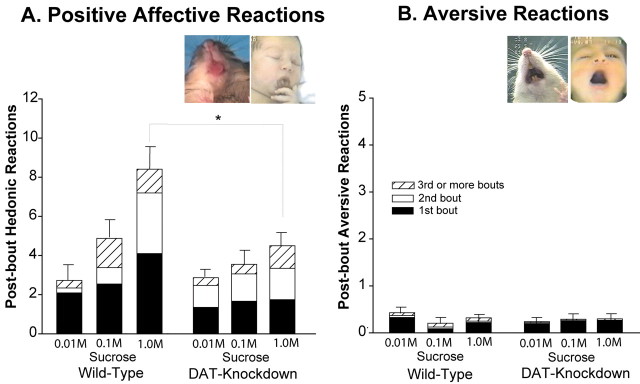Figure 5.
Affective liking reactions to sucrose tastes. A, Taste reactivity measure of positive orofacial affective reactions (tongue protrusions, lateral tongue protrusions, and paw licking) displayed within 5 sec after voluntary consumption of sucrose solutions (0.01, 0.1, and 1.0 m concentrations). B, Negative aversive reactions displayed after consuming sucrose. DAT knockdown mutant mice were not different from wild-type mice at low and medium concentrations, and mutants actually displayed fewer liking reactions at the highest sucrose concentration. Each bar is divided into three intake bouts: the lowest black portion shows affective reactions contributed by the initial bout of sucrose consumption (from 100% of mice); the white portion shows additional affective reactions contributed by the second intake bout (from 87% of mice that had a second bout); and the striped portion shows affective reactions contributed by the third and later bouts (from 65% of mice that had ≥3 bouts). Insets, Examples of rhythmic tongue protrusion of a DAT knockdown mutant mouse and of a homologous positive affective tongue reaction of human neonate to the taste of sucrose (left) and of an aversive gape to quinine (right; sucrose did not elicit sufficient gapes from mutant mice to produce an illustrative photograph, so an example from a rat is substituted here) [human photographs from Steiner et al. (2001), rat photograph from Berridge (2000)].

